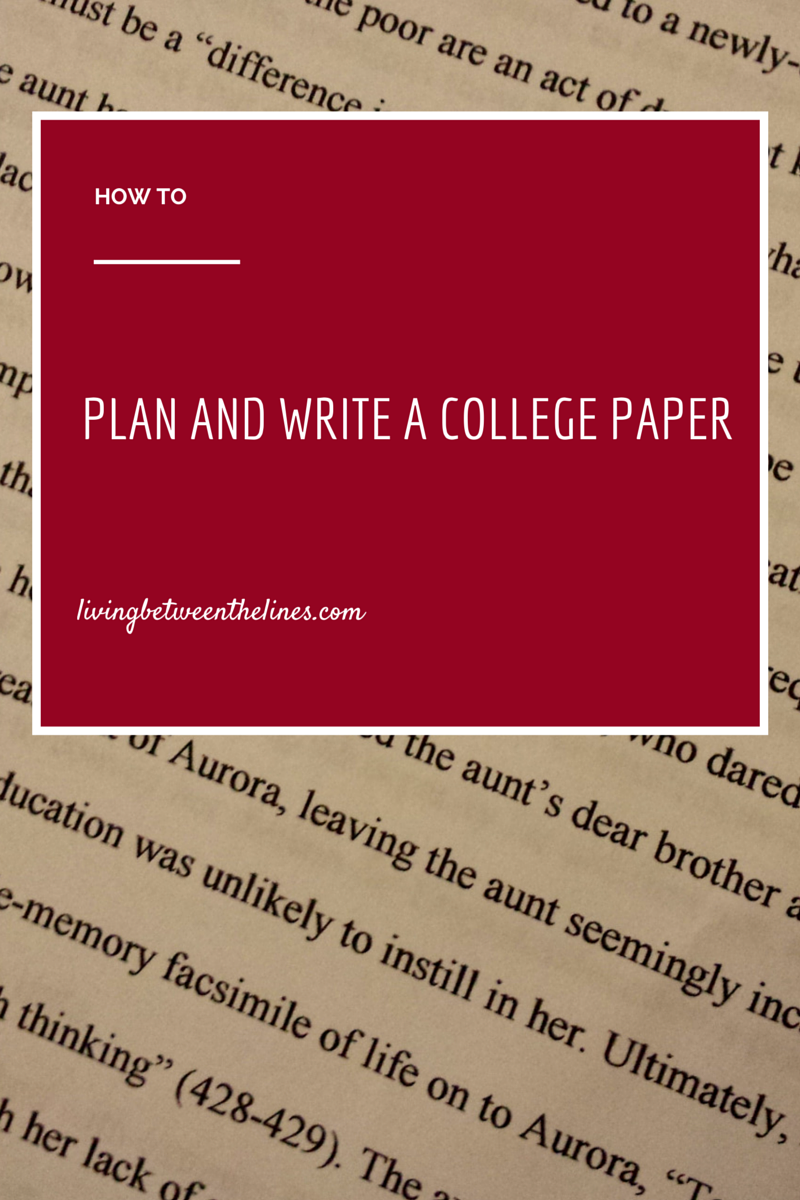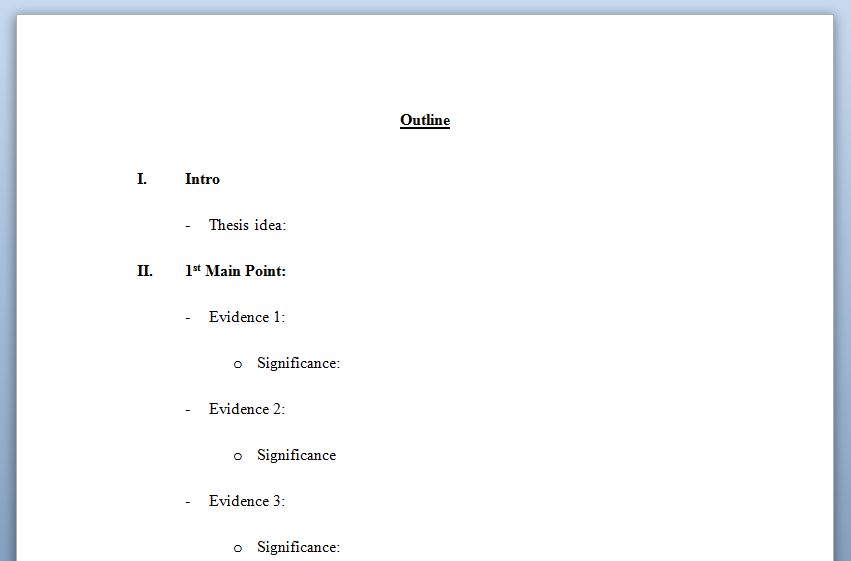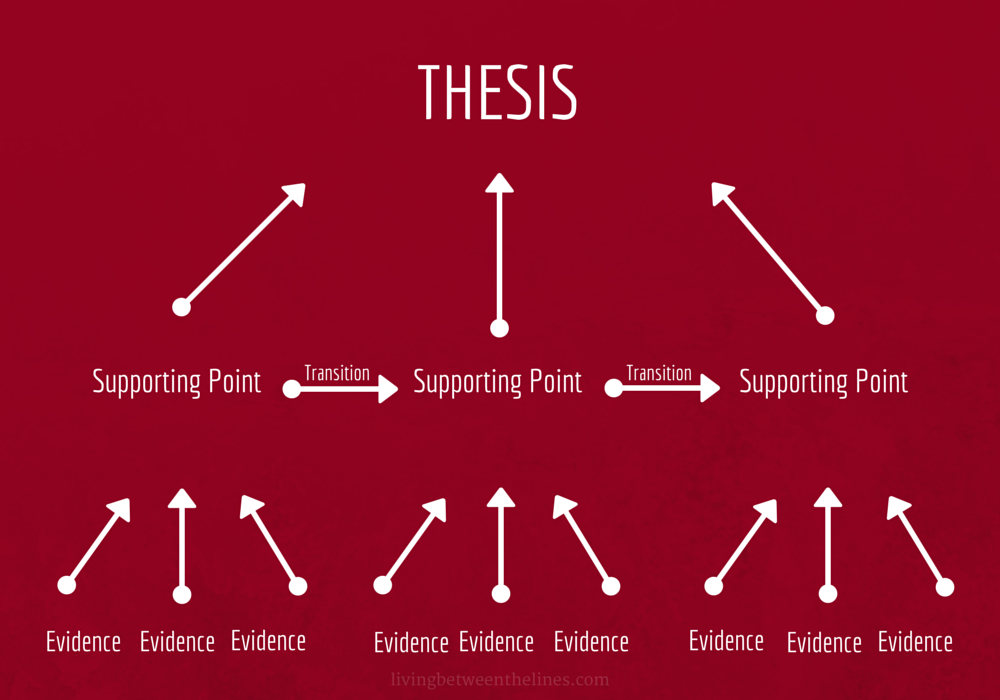I don’t know about you guys, but for me, the hardest part of writing a paper in college is getting started. Between the urge to procrastinate and uncertainty about what I want to write, it’s so difficult to actually put words on the page that often times I just… Don’t. Until eleven o’ clock the night before it’s due, which is a great time to start a paper if you want to hate yourself the next morning. I know I can’t be the only one who struggles with starting a paper, so I sat down and thought about what works best for me when I’m trying to write a paper. The result is this post, a step-by-step guide to actually getting started on a paper – any length, any subject, any time.
Start with the Prompt
Ultimately, most papers are asking you to make a point and then prove it – either through analysis of materials you’ve gone over in class or with outside research. Your instructor almost certainly gave you a prompt that told you what to write about. Reread that sheet before you start anything. There may be specific materials you need to address, or further clarification on what your argument should be. Make sure you follow all instructions on the prompt to a T, and keep it handy as you write, so you can consult it. If your prompt included a grading rubric, you’ve hit the jackpot. Rubrics are the holy grail of paper writing – they’ll tell you exactly how strongly your instructor values each part of your paper so you know where to devote most of your energy.
Outline Your Paper
Outlines improve your writing and save you time. It’s much harder to forget important points when you’ve got your whole paper planned, and staring at your keyboard wondering ‘What should I write next?‘ takes up a lot more time than you think. If you need outside research for your paper, it might be tempting to start there, but I encourage you not to. Like I said, you’re probably making your own argument and using other sources to prove it, so it’s best to start your outline with an original thought. That original thought can be the basis of your thesis statement. No need to write a perfectly polished thesis just yet, but establish the basic premise of your argument first.
Lay out your main supporting points now, as well. It’s best to think of your supporting points before you do any research, to avoid accidentally taking someone else’s ideas as your own. I also like to leave space for evidence under each main point. Once you have a main argument and some supporting points in mind, give a little thought to order. Try to group related ideas together at this stage to make writing transitions easier.
I have my favorite outline skeleton saved as a template on Word, it looks like this:
Fill in the Blanks
As you can see, my outline has a lot of blank spaces in it. Now you can start filling those in.
If your paper requires outside research, you can fill in your evidence with that. Almost all colleges (and most high schools) will give you access to some great academic databases through their library website; databases are a great alternative to Google since most articles will be peer-reviewed and reputable. As a library worker, I have to say – try actually physically going to the library! Anyone who works there is going to be very good at finding information, so don’t just wander the shelves, ask for some help.
If you’re analyzing materials you already have, like literature or class lectures, go over your materials again. Pay special attention to anything your instructors spent a lot of time on in class, that’s likely what’s very important.
The evidence you collect will help fill in the blank spaces on your outline. Before filling a blank space, ask yourself ‘How does this support my thesis idea or the supporting point I’m trying to make?‘. If you can answer that question, that evidence belongs in your paper. If you can’t, set that information aside. Now is also a good time to start your citations – there’s nothing worse than having the perfect quote but not being able to include it because you can’t remember where it’s from.
Refine your ideas
Now you probably know what most of the body of your paper will look like, which means you can write your official thesis statement. An ideal thesis is strongly worded, straightforward, and tells your readers exactly what you’ll be arguing in the upcoming pages. You don’t have to prove your thesis right then and there – you’ve got a whole paper for that.
You’ll also want to come up with topic sentences for each of your main supporting points. Summarize the point you’d like to make, and explain how it supports your thesis. Having strong topic sentences is helpful because it gives you a goal. Proving your entire thesis with a single piece of evidence is all but impossible. But if each piece of evidence supports a main point, and the main points support the thesis, you have a much stronger paper.
Finally, take one last look at the order of your supporting points. Make any changes, then start on your transitions. Writing them ahead of time makes you think in advance about how your points connect, and will give you a clear road map to follow once you actually start writing.
You now have all the pieces you need to put your paper together. The point of gathering all the different ‘parts’ of your essay before you start is making sure you can build a strong essay. Each piece supports others, and eventually proves your thesis. The structure works like a pyramid.
Set Up Your Document
There’s one more important step before you actually write that paper, though – formatting. Either your prompt or your syllabus will tell you exactly how your instructor wants your paper formatted. This is now your bible. Ensure margins, line spacing, alignment, and anything else your instructor mentions are exactly as listed. I don’t know who decided size 11 Calibri should be the default font on Microsoft Word, but they were probably wrong, and your instructor probably wants something else. (That something else is probably size 12 Times New Roman.) If your paper requires your last name, page numbers, or anything else in its header or footer, add that now.
Some instructors also have specific preferences for what you include with your name – date, their name, course number, and assignment details are popular choices. If your paper needs a title, either title it now or leave a bolded reminder to title it when you’ve finished writing. These are tiny details, but often a nominal amount of your score is assigned to formatting, and if you’re in between grades, formatting can make or break you.
Start Writing
You’ve basically planned out your entire paper, and armored yourself against mistakes, so now’s the time to start writing. The actual writing process is very personal, so I’ll just offer some general advice.
Whether you write your introduction before or after you write the body of your paper is a matter of personal preference. But if you save the intro for later, it’s probably best to have your thesis on the page somewhere, even if it’s just temporarily pasted at the top. Copy over all your pre-written material (thesis, transitions, topic sentences) and build off of them. Keep your outline with all your evidence handy in case you get stuck.
If you do get really stuck, there’s no shame in skipping to the next main point and finishing that segment later. It might be helpful to note that you wrote that section at two different times, so you can pay special attention to it when editing. Consult your evidence, topic sentence, and thesis regularly to make sure you stay on-topic. If you bring in any outside information, cite it, and explain how it supports your ideas. Never assume your reader knows why you’ve included information.
As for conclusions, connecting them to your introduction (through use of similar language, ideas, or images) tends to give your paper a sense of cohesion and balance. If you can summarize your main points and how they support your thesis, your conclusion is probably fine. Bonus points if you can give your paper a sense of “greater meaning” – does it reflect something essential about human nature? Will the topic you wrote on lead to advancements in any field? Contextualizing your argument in the big picture is a great way to finish.
In Summary
That was a lot of information, but it should be general enough to apply to any sort of essay. I think, depending on the paper, the longest step is “filling in the blanks” – any essay that requires extended research can take forever to put together. So, if any of you are reading this at… Say, eleven o’ clock the night before your paper is due, good luck and godspeed to you. Even if you’re not staring a deadline in the face, I hope I’ve been of assistance – whether this is your first college paper or you’re an old pro. These are just strategies that work for me – how do you get all your essays finished in time? I’m always on the hunt for tips, so feel free to share yours.
Disclaimer: I wrote this post to avoid starting an essay.





